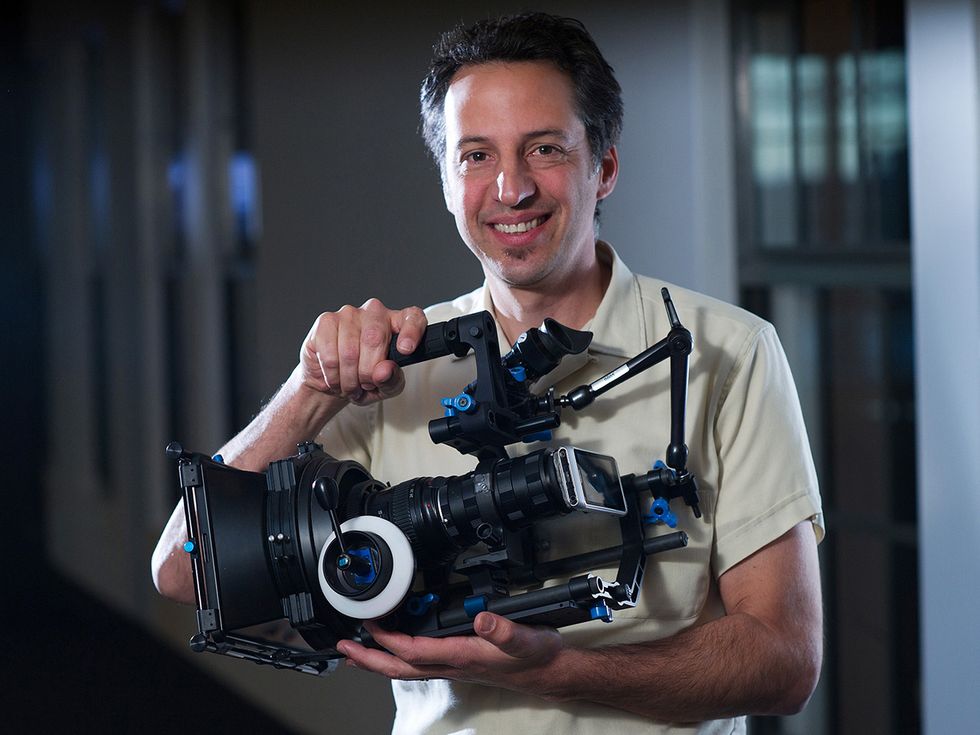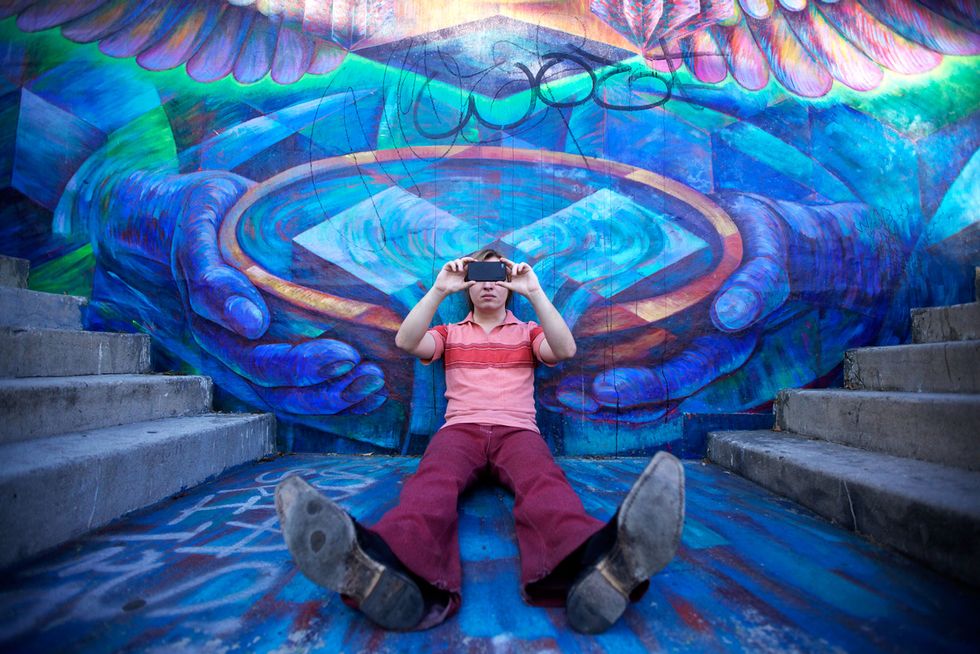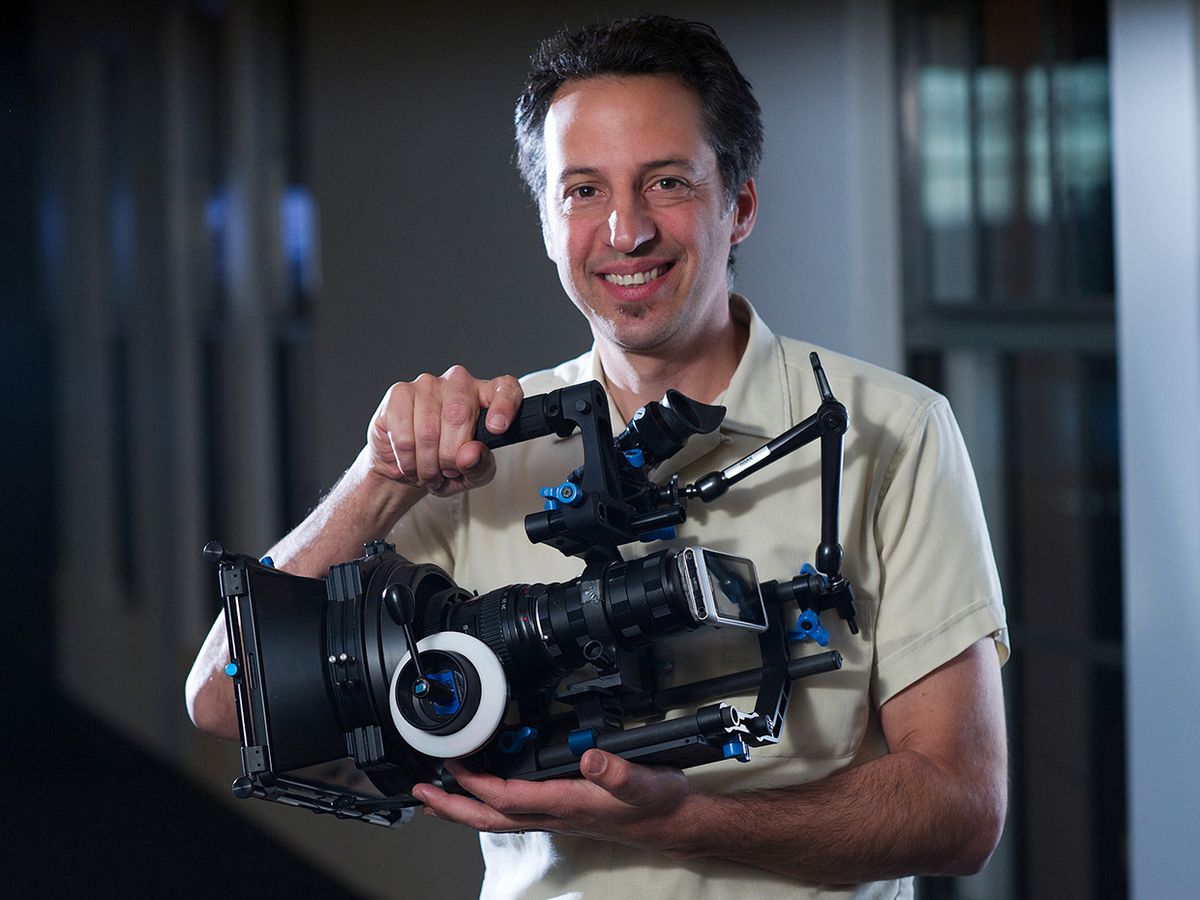
When Los Angeles songwriter Chris Price got his first iPhone last year, he filmed himself playing a couple of songs. “I was so struck by the quality of the sound, I ended up doing the whole record that way,” he says.
The result, Homesick, which drops 26 June in CD, vinyl, and online digital formats, is part of a growing trend of albums and movies being recorded and filmed on iPhones.
“I think my goal was to legitimize smartphones as part of the new frontier of DIY recording,” says Price, who began experimenting with an updated ’60s sound after leaving his old label, Geffen Records, two years ago. “It’s getting harder for young new artists to gather the thousands of dollars needed to rent studio space and hire an engineer and producer.”
Price also found that as expenses fell, creativity rose. “When you’re given less to work with,” he says, “your brain works overtime.” The phone’s portability freed him up in other ways as well.
“A phone is a mobile studio, so you’re not limited to a single room with the same acoustics for every song,” Price says. “I could pick out different spots around the city for their sonic qualities,” like reverb in a downtown tunnel or the beeping sound his Prius makes as it backs up. He used 4Tracks, an app that records in high-quality WAV files and mixed them in GarageBand on his computer. The result was a throwback to analog’s warmer, imperfect aesthetic.
He’s not the only artist to discover that small is beautiful. Earlier this year, Alabama rockers One Like Son released an iPhone-recorded album, Start the Show, produced with FourTrack, MultiTrack DAW, AmpKit, ThumbJam, and GuitarJack apps. In 2010, Gorillaz recorded an album, The Fall, on the iPad, using 20 different apps. The electronic duo Nuclear O’Reilly is believed to have created the first iPhone album, Phoning It In, in 2009.
A full-length movie, Olive, starring Gena Rowlands with music by Ben Lear (son of TV mogul Norman Lear), premiered last December and is making its way through the festival circuit. San Francisco radio personality Hooman Khalili and guitarist Pat Gilles made the $430 000 film with a 12-member crew in just over six weeks (including editing). “There’s something to be said about being first, ahead of the curve,” says Khalili.

In order to maintain the resolution on a movie screen, the pair used a Nokia N8 smartphone, which shoots in high-definition, affixed to a 35-mm Carl Zeiss lens, to enable depth of field. They hired a cellphone hacker to turn off the pixel-degrading auto-focus and auto-zoom, but ultimately had to color-correct in postproduction. “We couldn’t control the digital iris: It more than washed out; it actually changed the color,” says Khalili. “Indoor shots were especially tricky. We had to trick the camera quite a bit and put as much light on the actors as possible.”
There’s been enough fervor—at least on the cinematic side—to spawn the iPhone Film Festival, which started last year and holds its next festival in October.
“People are using iPhone films as entrée to the traditional filmmaking industry and as a way to keep their skills sharp. It’s equivalent to the musical jam session,” says festival cofounder Ruben Kazantsev. “Another advantage is having angles and shots not available with a traditional camera. For one film, Goldilocks, the director put an iPhone in a Ziploc bag into a wine glass and filmed the wine pouring into the glass. You’d never be able to get that shot with any other camera.”
About the Author
Susan Karlin regularly writes about the intersection of pop culture and technology for IEEE Spectrum. In “Obehi Ibhanesebhor: Digital Diva,” she profiled Scotland’s sole Nigerian-born, R&B-singing electrical engineer.



